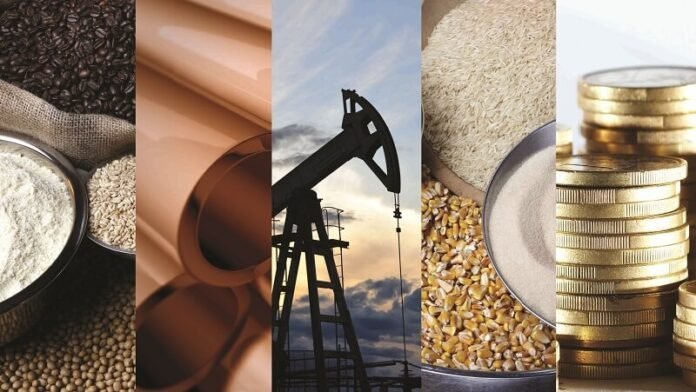The Commercial and Investment Bank (BCI) has released its commodities market report for May 2024. This study reveals important trends in energy, metals and food prices, highlighting price variations and the global outlook for these commodities. The analysis offers a comprehensive view of market dynamics, essential for understanding the economic impacts and opportunities for Mozambique. Check out the main forecasts in this report below.
Energy and metals: Price changes
Natural gas
US natural gas saw a significant appreciation of 33.49%, reaching USD 2.13 per MMBtu. This increase is attributed to the prospects of a decrease in supply. The U.S. Energy Information Administration (EIA) forecasts a 1% drop in the production of marketed natural gas in the US this year, due to reduced drilling activities. In contrast, the average price of natural gas in Europe rose by 11.42% to USD 10.12 per MMBtu, reflecting fears about supply restrictions arising from geopolitical conflicts in the Middle East and Europe.
Metals
Metal prices rose by 5.5% in May, especially aluminum, which rose by 12.58%. The prospects of a reduction in supply by the main producers, such as the mining company Rio Tinto, drove this rise. The company has reduced aluminum exports due to a shortage of natural gas, exacerbating supply fears.
Commodities associated with major projects
Coal
The average price of mineral coal rose by 5.22% to USD 142.01 per metric ton. Growing demand in the US, due to the EIA’s revision of its electricity consumption forecast, and the increase in coal imports by China contributed to this rise. In India, the use of coal for electricity generation increased significantly in the first quarter of 2024, due to economic growth and high temperatures.
Oil
In contrast, the average price of oil fell, penalized by expectations of an increase in global supply. The EIA forecasts an increase in global production of oil and other liquid fuels of around 1.0 million barrels per day in 2024, offsetting the reduction forecast by OPEC+.
Import commodities.
Import commodities
Sugar
The average price of sugar fell by 7.56%, due to expectations of an increase in supply from the main producers, such as Brazil, India and Thailand. The National Bioenergy Union in Brazil reported an expected increase in global sugar production for the 2024/2025 campaign.
Cotton
Cotton also showed a depreciation of 4.21%, with the average price standing at USD 1.91 per kilogram. USDA forecasts indicated an increase in world production, driven by a larger harvest in India and favorable weather conditions in the USA and Australia.
Food: moderate increases
Wheat
The average price of wheat appreciated by 6.29% to USD 289.42 per metric ton, driven by forecasts of reduced supply. According to the USDA, the global outlook for the 2024/2025 marketing year points to a decrease of 2.2 million tons in supply, resulting in a total of around 1.05 billion tons. This reduction is attributed to lower reserves in China and Russia. Global demand for wheat, on the other hand, is expected to increase by 2.0 million tons, reaching a maximum of 802.4 million, driven by greater demand for food, planting and industrial purposes. In Brazil, the floods recorded in the state of Rio Grande do Sul also contributed to the prospects of lower production.
Rice
The average price of rice rose by 6.08% to USD 628.00 per ton due to forecasts of increased global consumption. According to the USDA, global consumption for the 2024/2025 marketing year is expected to reach a maximum of 526.4 million tons, mainly due to higher demand from countries such as India, the Philippines, Indonesia and Bangladesh, which should offset the reduction in China. India is expected to continue as the world’s largest exporter, with 18.0 million tons, an increase of 2.0 million tons compared to the 2023/2024 marketing year, but below the 22.0 million tons recorded in the 2021/2022 marketing year due to export restrictions.
Outlook
Banco de Moçambique expects Brent and food prices to remain stable in the medium term, in line with expectations of weak global demand, conditioned by the current tightening of monetary conditions and persistent geopolitical conflicts in the Middle East and Europe. This outlook suggests a cautious scenario for the coming months, with the need for constant monitoring of variations in the global commodities market.
See the full study at: BCI Commodity Markets Report.




